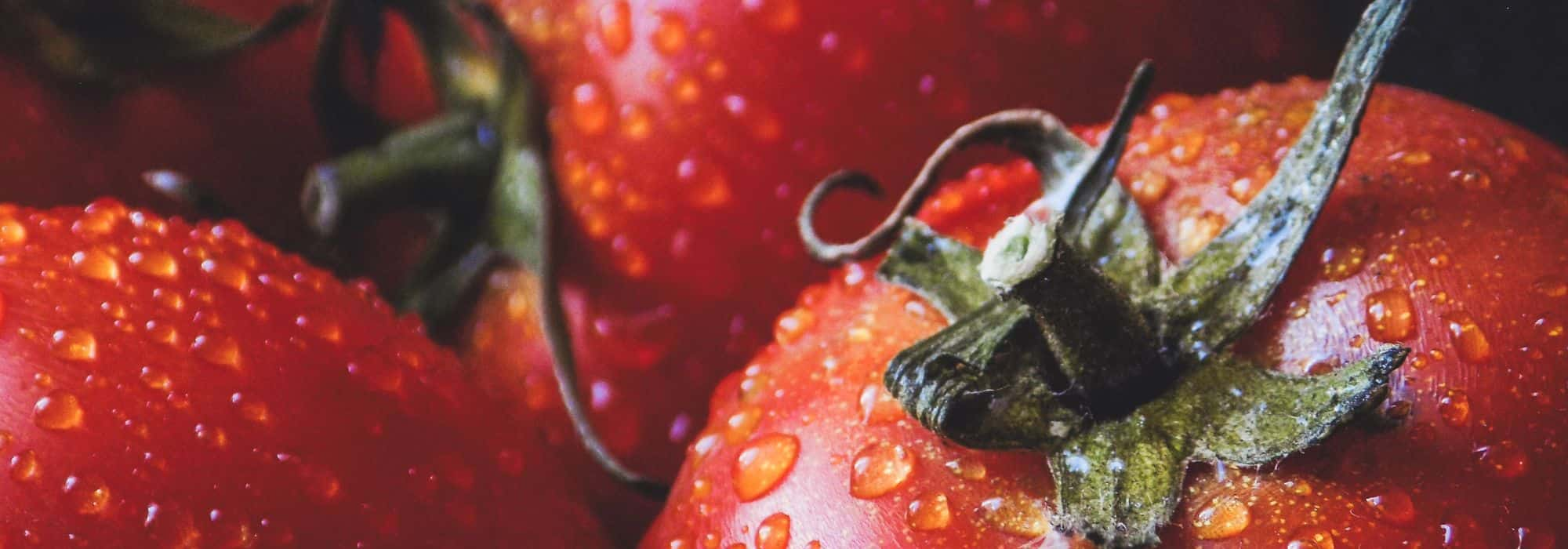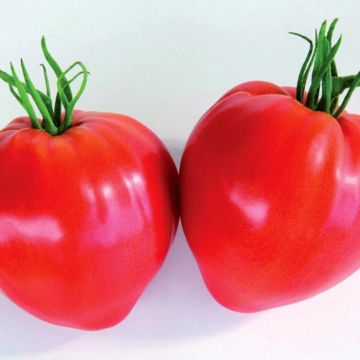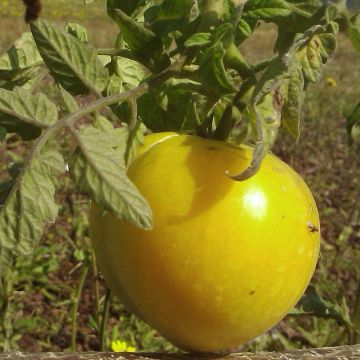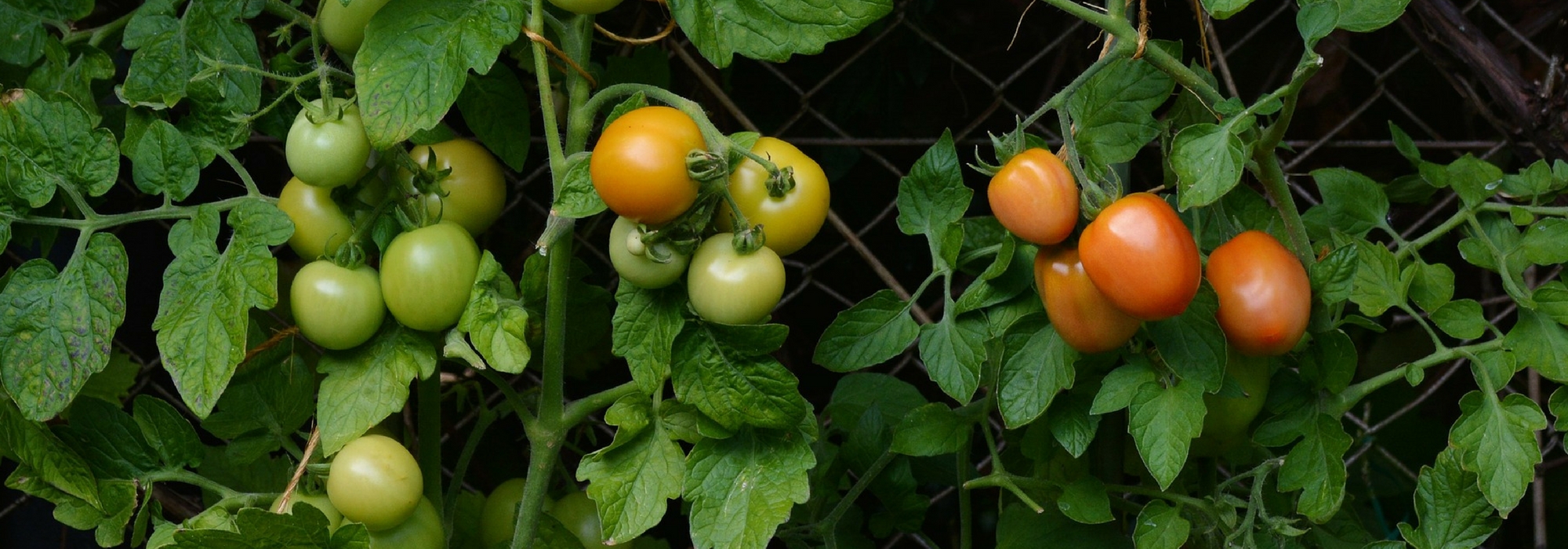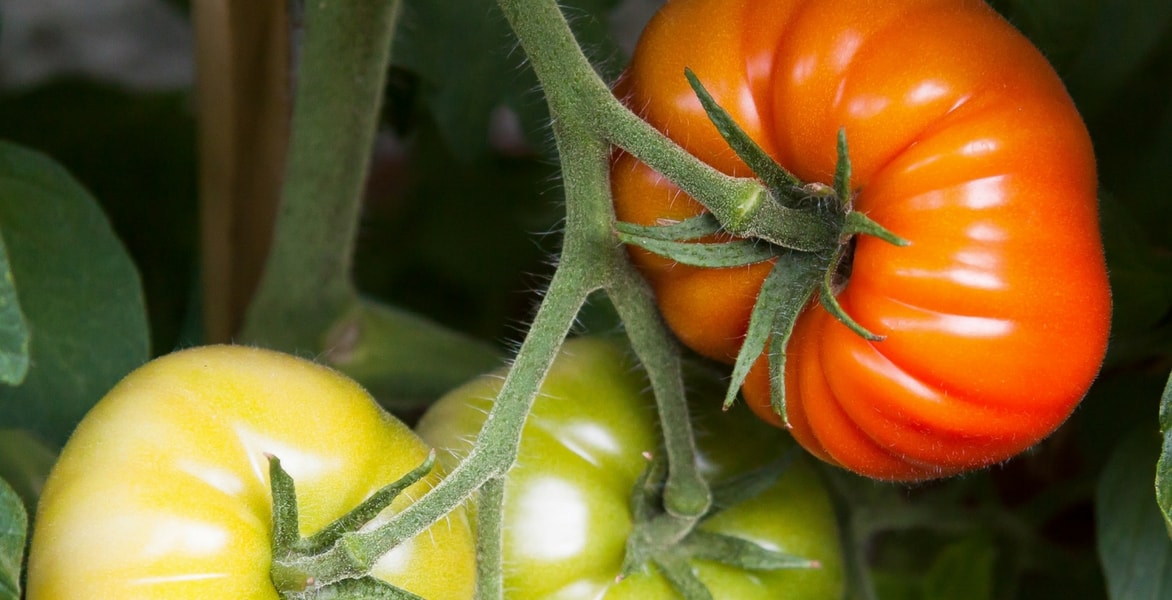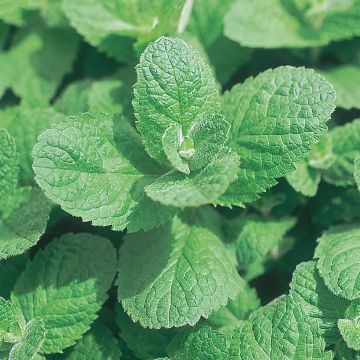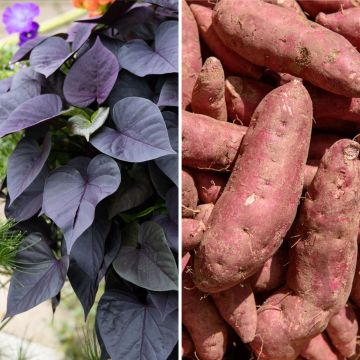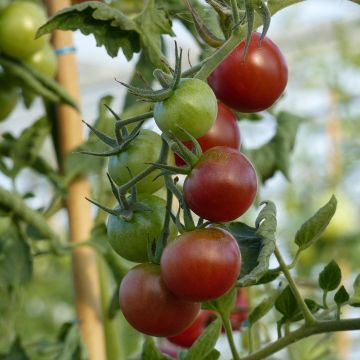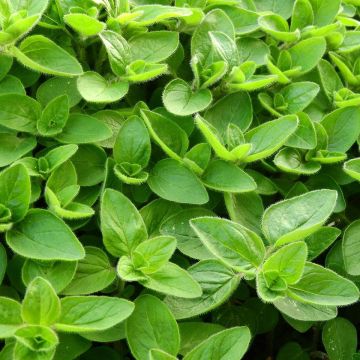

Tomato Ochsenherz Tomato plants
Tomato Ochsenherz Tomato plants
Solanum lycopersicum Ochsenherz
Tomato
les plants sont arrivés bien mieux que l'année passée ils ont bien repris espére avoir une récolte contrairement a l'an dernier
Angela, 08/05/2023
Special offer!
Receive a €20 voucher for any order over €90 (excluding delivery costs, credit notes, and plastic-free options)!
1- Add your favorite plants to your cart.
2- Once you have reached €90, confirm your order (you can even choose the delivery date!).
3- As soon as your order is shipped, you will receive an email containing your voucher code, valid for 3 months (90 days).
Your voucher is unique and can only be used once, for any order with a minimum value of €20, excluding delivery costs.
Can be combined with other current offers, non-divisible and non-refundable.
Home or relay delivery (depending on size and destination)
Schedule delivery date,
and select date in basket
This plant carries a 6 months recovery warranty
More information
We guarantee the quality of our plants for a full growing cycle, and will replace at our expense any plant that fails to recover under normal climatic and planting conditions.

Description
The Ochsenherz Tomato (also known as the "German Golden") is a very old German variety of beefsteak tomato that is over 200 years old. It produces very large fruits, weighing 200 to 250 grams, with golden skin and flesh veined with red. The flesh is flavorful, with delicately fruity aromas. It is versatile and works wonders in salads, but can also be used to make sauces, stuffed tomatoes, vegetable tians, and ratatouille. The plants are vigorous and need to be staked early to prevent them from bending under the weight of their own fruit. The plug plants should be planted from April to June after the last frost, when they have reached about 15 cm (6in). The 'Ochsenherz' Tomato can be harvested from late June to October.
Tomatoes are native to South America and Central America. Several varieties were already cultivated by the Incas long before the arrival of the Conquistadors. The genetic diversity of this nightshade family plant never ceases to amaze. The term 'tomato' comes from the Inca word Tomatl, which refers to both the plant and the fruit it produces. Tomatoes come in a wide range of colors, shapes, and sizes, with the exception of blue.
Tomatoes are among the many foods that came to us from the New World, along with beans, corn, squash, potatoes, and chili peppers. However, it took longer for tomatoes to become a regular part of our diets. For a long time, they were cultivated for their aesthetic and medicinal qualities. They were thought to be toxic due to their resemblance to the fruit of the Mandrake, another nightshade plant. Tomatoes only became a staple on our tables in the early 20th century.
The tomato plant is a herbaceous perennial in tropical climates, but is grown as an annual in our latitudes. It becomes lignified over time and produces small, insignificant yellow flowers that cluster together and develop into fruits.
It must be admitted that the tomato fruit is very attractive and adds a pleasant color to the vegetable garden. It also has numerous nutritional benefits. Low in calories, like most vegetables, and rich in water, it contains a highly interesting molecule: lycopene, a powerful antioxidant. The longer the tomato is cooked, the more it releases this valuable nutrient and makes it available and easily absorbed by the body. It is also rich in vitamin C (especially when eaten raw), pro-vitamin A, and trace elements.
Harvesting: Ochsenherz is a semi-early variety, and can bear fruit from June to October depending on the planting date and the climatic and growing conditions (in a greenhouse or outdoors). There is no foolproof way to determine when a tomato is fully ripe. Harvesting should be done when, at the very least, it has fully developed the color it was announced to have, and when its texture, while remaining firm, shows a slight softening. For better preservation, it is recommended to pick the fruit with its peduncle.
Storage: Tomatoes should be stored at an optimal temperature of 10-15°C. They can be kept for a few days in the vegetable drawer of your refrigerator or spread out in the open air. However, refrigeration alters the taste qualities of the fruits. To keep them longer, consider culinary methods such as tomato confit, sun-dried tomatoes, sauces, frozen fruits, preserves, jams, or juices. Tomato confit is particularly loved because it is simple and so flavorful: cut your tomatoes in half and collect the juice. Place the halves face up on the baking tray of your oven. Season with salt, pepper, and sugar, then bake at a very low temperature for at least one hour. Remove the tomatoes and consume immediately, or store them in a glass jar and cover with olive oil.
Gardening tip: It is recommended to grow several varieties of tomatoes each year to minimize the risk of a complete loss of harvest due to climatic conditions or specific diseases. To prevent the phenomenon of 'blossom end rot' - not a disease but a calcium deficiency - spray a comfrey maceration rich in calcium on your plants.
Harvest
Plant habit
Foliage
Other Large tomato plants
View all →Planting and care
Tomato plants are easy to grow. Sunlight and warmth are crucial for the success of this crop. Tomatoes thrive in rich, well-draining soil that has been deeply loosened. A few months before planting, add well-rotted compost after loosening the soil. If your soil is heavy, add some sand at the time of planting.
Initially, allow the plug plants to grow by transplanting them into 8 to 10.5 cm (3 to 4in) buckets filled with compost. Place them in a sunny and heated location, making sure the temperature never drops below 12-14°C (53.6-57.2°F), as this could cause the foliage to turn yellow and the growth of the plant to stop. When the plants reach a height of about 15 cm (6in), transplant them into the ground if the outdoor temperatures allow.
Planting in the ground should be done once the risk of frost has passed, usually after the "Ice Saints" in mid-May. Choose a very sunny and sheltered spot. Space the plants 50 cm (20in) apart in rows and 70 cm (28in) between rows if pruning, or 1m (0 or 3ft) in all directions for unpruned cultivation. Dig a hole (3 times the volume of the plug plant), add some well-decomposed compost to the bottom of the hole. Place your plant, which can be buried up to the first leaves, then backfill. Firm the soil, create a shallow basin around the base, then water generously. Be careful not to wet the leaves to protect your plants from fungal diseases.
Install supports (soon after planting to avoid damaging the roots). Mulch around the base of the plants. Water regularly as irregular watering can lead to calcium deficiency, resulting in blossom end rot.
Furthermore, tomatoes, like potatoes, are susceptible to late blight. This is a fungal disease caused by the Phytophthora infestans fungus. Late blight develops in warm and humid weather. Small spots appear, white on the undersides of leaves and green-gray on the top. To reduce the risk, space the plants adequately and avoid watering the foliage. In terms of crop rotation, wait 4 years before growing any plants from the Solanaceae family in the same location and avoid planting them in neighboring rows. If necessary, spray with Bordeaux mixture or prepare decoctions using horsetail or garlic.
Although less common, tomatoes can also be grown in pots, choosing varieties with small fruits and placing the pot in a sunny location.
Cultivation
Care
Intended location
Planting & care advice
-
, onOrder confirmed
Reply from on Promesse de fleurs
Similar products
Haven't found what you were looking for?
Hardiness is the lowest winter temperature a plant can endure without suffering serious damage or even dying. However, hardiness is affected by location (a sheltered area, such as a patio), protection (winter cover) and soil type (hardiness is improved by well-drained soil).

Photo Sharing Terms & Conditions
In order to encourage gardeners to interact and share their experiences, Promesse de fleurs offers various media enabling content to be uploaded onto its Site - in particular via the ‘Photo sharing’ module.
The User agrees to refrain from:
- Posting any content that is illegal, prejudicial, insulting, racist, inciteful to hatred, revisionist, contrary to public decency, that infringes on privacy or on the privacy rights of third parties, in particular the publicity rights of persons and goods, intellectual property rights, or the right to privacy.
- Submitting content on behalf of a third party;
- Impersonate the identity of a third party and/or publish any personal information about a third party;
In general, the User undertakes to refrain from any unethical behaviour.
All Content (in particular text, comments, files, images, photos, videos, creative works, etc.), which may be subject to property or intellectual property rights, image or other private rights, shall remain the property of the User, subject to the limited rights granted by the terms of the licence granted by Promesse de fleurs as stated below. Users are at liberty to publish or not to publish such Content on the Site, notably via the ‘Photo Sharing’ facility, and accept that this Content shall be made public and freely accessible, notably on the Internet.
Users further acknowledge, undertake to have ,and guarantee that they hold all necessary rights and permissions to publish such material on the Site, in particular with regard to the legislation in force pertaining to any privacy, property, intellectual property, image, or contractual rights, or rights of any other nature. By publishing such Content on the Site, Users acknowledge accepting full liability as publishers of the Content within the meaning of the law, and grant Promesse de fleurs, free of charge, an inclusive, worldwide licence for the said Content for the entire duration of its publication, including all reproduction, representation, up/downloading, displaying, performing, transmission, and storage rights.
Users also grant permission for their name to be linked to the Content and accept that this link may not always be made available.
By engaging in posting material, Users consent to their Content becoming automatically accessible on the Internet, in particular on other sites and/or blogs and/or web pages of the Promesse de fleurs site, including in particular social pages and the Promesse de fleurs catalogue.
Users may secure the removal of entrusted content free of charge by issuing a simple request via our contact form.
The flowering period indicated on our website applies to countries and regions located in USDA zone 8 (France, the United Kingdom, Ireland, the Netherlands, etc.)
It will vary according to where you live:
- In zones 9 to 10 (Italy, Spain, Greece, etc.), flowering will occur about 2 to 4 weeks earlier.
- In zones 6 to 7 (Germany, Poland, Slovenia, and lower mountainous regions), flowering will be delayed by 2 to 3 weeks.
- In zone 5 (Central Europe, Scandinavia), blooming will be delayed by 3 to 5 weeks.
In temperate climates, pruning of spring-flowering shrubs (forsythia, spireas, etc.) should be done just after flowering.
Pruning of summer-flowering shrubs (Indian Lilac, Perovskia, etc.) can be done in winter or spring.
In cold regions as well as with frost-sensitive plants, avoid pruning too early when severe frosts may still occur.
The planting period indicated on our website applies to countries and regions located in USDA zone 8 (France, United Kingdom, Ireland, Netherlands).
It will vary according to where you live:
- In Mediterranean zones (Marseille, Madrid, Milan, etc.), autumn and winter are the best planting periods.
- In continental zones (Strasbourg, Munich, Vienna, etc.), delay planting by 2 to 3 weeks in spring and bring it forward by 2 to 4 weeks in autumn.
- In mountainous regions (the Alps, Pyrenees, Carpathians, etc.), it is best to plant in late spring (May-June) or late summer (August-September).
The harvesting period indicated on our website applies to countries and regions in USDA zone 8 (France, England, Ireland, the Netherlands).
In colder areas (Scandinavia, Poland, Austria...) fruit and vegetable harvests are likely to be delayed by 3-4 weeks.
In warmer areas (Italy, Spain, Greece, etc.), harvesting will probably take place earlier, depending on weather conditions.
The sowing periods indicated on our website apply to countries and regions within USDA Zone 8 (France, UK, Ireland, Netherlands).
In colder areas (Scandinavia, Poland, Austria...), delay any outdoor sowing by 3-4 weeks, or sow under glass.
In warmer climes (Italy, Spain, Greece, etc.), bring outdoor sowing forward by a few weeks.






























